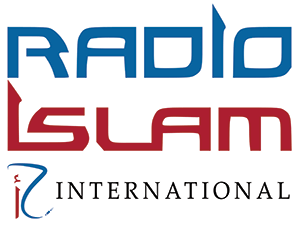Sameera Casmod | sameerac@radioislam.co.za
14 April 2025 | 13:00 CAT
3-minute read

Resurgence of underground resistance in Gaza
On April 13, 2025, Hamas’ Al-Qassam Brigades released details about ambushing an Israeli infiltration unit in the eastern part of Rafah, southern Gaza, by detonating a house rigged with explosives in the Abu al-Rus area, reportedly killing and injuring Israeli forces. The ambush signals a resurgence in underground resistance operations in the enclave.
While recent months have seen a lull in the frequency of resistance operations following Israel’s breach of the March ceasefire, Moulana Ebrahim Moosa explains that this is not due to a decline in will but rather a matter of strategy and resource scarcity.
Moulana Moosa observed that the intensity of resistance operations often fluctuates according to strategic considerations. He emphasised that it was not the resistance that violated the ceasefire, adding that they had likely hoped it could still be preserved.
The Al-Qassam Brigades faced challenges in close-quarter combat due to the Israeli force’s reliance on airstrikes and its limited and sporadic ground operations.
Israel has boasted of control over areas like the Netzarim and Morag axes and new buffer zones. However, these claims are misleading. These zones are controlled by air and artillery, not boots on the ground, and Palestinians are kept out through bombardment, not physical occupation.
These claims serve a political purpose, giving Israel leverage in ongoing negotiations while avoiding mass casualties among its soldiers. The Israeli army, mindful of the high cost of previous ground offensives, has so far refrained from large-scale troop deployments in Gaza. Military action on that scale is expected only if a political decision is taken to fully reoccupy the territory.
A military facing rebellion
A surprising development adding to Israel’s challenges is an unprecedented refusal crisis among its reservists. It has been described it as “the biggest refusal crisis in decades.” Reservists from elite units—including the Air Force, Navy, and the renowned Unit 8200—have signed open letters calling for an end to the war.
“The Israeli military is highly dependent on reservists, yet only about 50% are now reporting for duty,” he said. “That’s roughly 100 000 reservists who’ve refused to serve.”
While early in the war most Israelis rallied behind the army, public sentiment has shifted. “There’s growing disillusionment—not necessarily pro-Palestinian sentiment, but economic hardship and emotional fatigue. Many are losing income and time away from their jobs.”
Gaza’s medical catastrophe: ‘The worst I’ve ever seen’
The humanitarian toll in Gaza is being documented with heartbreaking clarity by international doctors returning from medical missions. Dr Feroze Sidhwa, an American surgeon who has served in conflict zones like Ukraine and Haiti, recently described Gaza as “incomparable.”
Dr Sidhwa said that the Nasser Hospital received 130 patients in six hours after the suhoor massacre in Ramadan, half of whom were children and reportedly performed more paediatric trauma surgeries in one night than he does in an entire year in the US.
He spoke of overwhelmed facilities where up to 100 operations take place daily under catastrophic conditions. “There’s no pain medication, no antibiotics. People wake up from amputations with no anaesthesia. The floor is covered in blood—you can slip on it.”
Another American doctor, Farhan Abdul Azeez, emphasised that patients’ prayers were not just curses against Israel. “They were making dua against Muslims and Arabs worldwide, whom they feel have abandoned them.”
As Gaza’s resistance recalibrates and Israel faces internal military dissent, the broader picture is one of sustained trauma and unresolved conflict. With each passing day, the silence of global powers and regional allies weighs heavier on those trapped in Gaza’s blood-soaked hospitals, fighting not just for survival, but for dignity amid devastation.
Listen to the Palestine Report on Sabaahul Muslim with Moulana Sulaimaan Ravat.








0 Comments